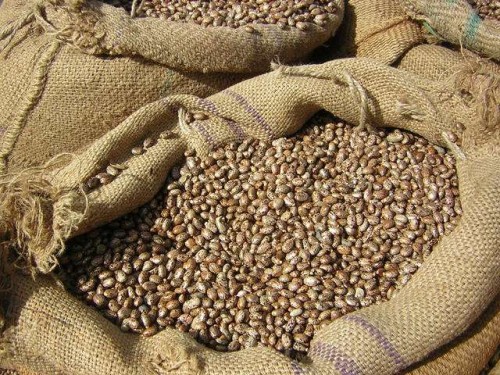|
LENTILS AND BEANS >> Doctrinals not yet conjoined to Good
 In Egypt and Palestine an important part of the food of the people is composed of beans and lentils, several kinds of which are extensively cultivated. One very common small lentil, which is made into a porridge, is still called by the same name as the staple of Jacob’s pottage, for which Esau sold his birthright. The coarse bread of the country is crumbed or dipped into it—the pottage seldom if ever being eaten without it. And so we read that “Jacob gave Esau bread and pottage of lentils; and he did eat and drink” (Genesis 25:34). In Egypt and Palestine an important part of the food of the people is composed of beans and lentils, several kinds of which are extensively cultivated. One very common small lentil, which is made into a porridge, is still called by the same name as the staple of Jacob’s pottage, for which Esau sold his birthright. The coarse bread of the country is crumbed or dipped into it—the pottage seldom if ever being eaten without it. And so we read that “Jacob gave Esau bread and pottage of lentils; and he did eat and drink” (Genesis 25:34).
In general the family is a family of vines—the beans climbing by winding the stalk about other objects, and the peas by tendrils which are modified leaflets. They are nutritious, possessing muscle-making elements like the grains; but their meal does not, like that of the grains, compact into bread. Probably it is on account of this last peculiarity that Swedenborg says they represent
“a collection of ill-connected scientifics,” or things learned; or “doctrinals not yet conjoined to good, thus a collection of them without order”(Arcana Coelestia #3316).
Again he says that lentils correspond to “the good of doctrinals”; and explains that one first learns doctrinals, or teachings of truth, and presently is affected by them, and this affection is the good of the teachings (Apocalypse Explained #3332). In some respects the Pulse as articles of food are akin to the grains; they contain like them the nitrogenized or tissue-making element, and they are hard and dry, and can be kept any length of time. They are grouped with the grains as food for man, in Genesis; for they both are herbs yielding seed, which are given to man for meat. They are not, however, ground into meal, as are most of the grains, and will not compact into bread; but, like rice, are boiled until they are soft, or altogether crumble away. Their sustaining properties as food indicate a correspondence with some form of satisfaction in work done.
Their want of cohesion or compactness indicates the want of cohering plan and resolution, and coincides with Swedenborg’s clue of “ill-connected scientifics”—that is, things learned and done from instruction, and not from intelligent thought. They seem to differ from rice, in that the chief element in the correspondence of rice is the duty of obedience, and the satisfaction of faithfulness to this duty; but the Pulse relate rather to a desire to learn how to do uses, and the doing of them in a voluntary, imitative way, according to instruction. The eagerness of the plants to climb, their absolute dependence upon other objects for support, and their willingness to attach themselves to anything that will give the support, all indicate a state of initiation into the uses of life, as in youth. The beans, from their twining bodily around the means of support and elevation, seem to relate to the learning of things that are loved because they are good; and the peas, from their mode of climbing by modified leaflets, appear to relate to the learning of what seems to be true and right; for leaves represent perceptions, or reception by the understanding.
Author: JOHN WORCESTER 1875
|